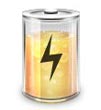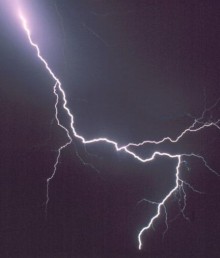 Learn interesting trivia and information about a wide range of science topics with our fun science facts for kids.
 Energy Facts Energy Facts
Check out our fun energy facts for kids! Read about interesting types of energy such as solar, wind, kinetic, chemical, nuclear and geothermal. Learn important energy laws, what potential energy is, how joules and calories are used to measure energy and much more. | |
The word energy comes from the Greek word energeia. Most types of energy are either a form of kinetic energy or potential energy. Common examples include heat energy, elastic potential energy, chemical energy, sound energy, nuclear energy, geothermal energy and gravitational potential energy. Kinetic energy refers to the energy an object has because of its movement. A car in motion has kinetic energy, as does a basketball when you pass or shoot it. Energy can be transformed from one form to another. In lightning, electric potential energy transforms into light, heat and sound energy. The law of conservation of energy states that energy can only be transformed, it can’t be created or destroyed. You might have heard of Albert Einstein’s famous formula E = mc² (energy equals mass multiplied by the speed of light squared). Food contains chemical energy which is used by living organisms such as animals to grow and reproduce. Food energy is usually measured in calories or joules. Wind farms contain large numbers of wind turbines which are used to transform wind energy into a useful energy such as electricity. The use of wind power to generate electricity doubled between the years 2005 and 2008. More wind energy facts. The USA's Mojave Desert is home to the world's largest solar power plant. More solar power facts. The Three Gorges Dam in China is the world's largest hydroelectric power station. More hydropower facts. Plants use energy from sunlight during an important process called photosynthesis. A person standing on a diving board above a swimming pool has gravitational potential energy. During chemical reactions, chemical energy is often transformed into light or heat. Stretched rubber bands and compressed springs are examples of elastic potential energy.
| 
|
|